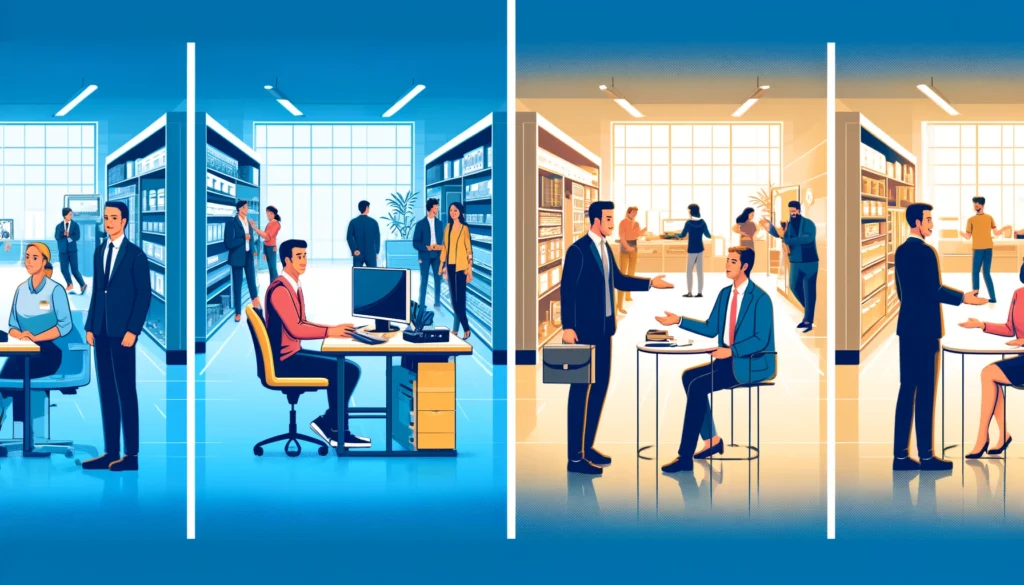HR The Weaver

In the ever-evolving competitive landscape of business, the focus is increasingly shifting towards not only achieving internal milestones but also enhancing how organizations serve and support their customers. This shift is encapsulated by Dave Ulrich pivotal insight:
“HR is not just about serving its employees, it’s about serving our customers through people.”
This perspective highlights the crucial role of human resources in linking internal strategies with customer-centric outcomes, making HR a central figure in the business strategy.
Organizations are built on foundational pillars that ensure both internal stability and potent customer relationships. These pillars—talent, leadership, organizational infrastructure (including culture and values), technology, and human resources (HR)—are critical for fostering an environment that prioritizes customer satisfaction. Envisioned as a stool with four legs and HR as the binding top, this structure provides a robust framework for exploring how each component contributes to superior customer support and satisfaction.
5 Pillars of Organisation Success

STOOL
The metaphor of a stool with five legs represents the structural integrity and balance necessary for organizational success, with each leg symbolizing a critical component of the organization. This model not only illustrates the individual importance of each pillar but also emphasizes how they collectively support the overarching goals of the organization, particularly in serving and satisfying customers. Let’s delve deeper into each of these pillars:
Organizations striving for excellence need a solid foundation built on critical internal elements that directly impact their ability to serve customers effectively. These foundational pillars—talent, leadership, organizational infrastructure, technology, and human resources (HR)—not only fortify internal operations but are pivotal in enhancing customer engagement and satisfaction. Here’s a more in-depth look at each of these pillars:
1. Talent: Cultivating Expertise and Alignment with Organizational Values
The talent within an organization is more than just the skills employees bring; it’s about how these skills are harnessed to meet and exceed customer expectations. Investing in the right talent means focusing on a recruitment and development strategy that prioritizes both technical abilities and alignment with the company’s values and culture. Effective talent management involves continuous training and professional development opportunities to keep the workforce adept at handling evolving market demands. Moreover, empowering employees with decision-making capabilities and ownership of their roles leads to innovative solutions and proactive customer service, ultimately enhancing customer trust and loyalty.
2. Leadership: Driving Vision and Fostering a Customer-Centric Culture
Leadership is the catalyst in shaping the strategic direction and cultivating a culture that prioritizes the customer at every level of the organization. Effective leaders are not only visionaries but also adept at communicating this vision to inspire and motivate their teams. They ensure that the organizational goals are aligned with customer needs, making customer satisfaction a key metric for success. Leaders foster an environment where feedback is actively sought and acted upon, creating a dynamic system that adapts and grows in response to customer interactions. This proactive approach in leadership helps in navigating challenges and seizing opportunities in a way that consistently adds value to the customers.
3. Organization (the way we work)
The organizational culture and environment encompass not just the physical and digital infrastructure but also the systems, processes, and values that define how work is done and how people interact. A positive, adaptive culture encourages teamwork, innovation, and a strong focus on customer service. Infrastructure plays a supportive role by facilitating efficient workflows and effective communication. Together, they create an environment that empowers employees to perform at their best and fosters a seamless customer experience. This pillar is about ensuring that the workplace itself, through both culture and physical setup, is conducive to fulfilling the organization’s customer-centric vision.
4. Technology: Leveraging Digital Tools to Enhance Customer Engagement
In today’s digital age, technology plays a critical role in shaping customer interactions. From data analytics that provide insights into customer behaviors and preferences to CRM systems that manage customer relationships, technology enables personalized and engaging customer experiences. Furthermore, technology facilitates seamless communication channels, both internally among team members and externally with customers, ensuring that customer queries are addressed promptly and effectively. By adopting cutting-edge technologies, organizations can not only improve their operational efficiencies but also create meaningful interactions that build customer loyalty and advocacy.
5. Human Resources: Weaving It All Together
HR’s role as the master weaver in integrating these pillars is critical. HR develops strategies that align with organizational goals, fosters a culture that promotes customer-centric behaviors, and implements systems that facilitate effective collaboration and communication. Through strategic initiatives like targeted training programs, HR ensures that employees are well-equipped to provide excellent customer service. HR also plays a crucial role in change management, ensuring that shifts in culture, technology, or processes are smoothly transitioned and well-received across the organization.
Here we have HR Guru, Dave Ulrich sharing his views on the above at the GHR Talk Show.
Conclusion
The seamless integration of talent, leadership, organizational culture, environment, technology, and HR forms a robust framework that not only supports internal stability and growth but also drives exceptional customer service. By ensuring that these pillars are effectively woven together by HR, organizations can foster a dynamic, responsive, and customer-focused culture. This comprehensive approach enhances operational efficiency, boosts employee satisfaction, and strengthens the organization’s capacity to build lasting relationships with customers, thereby achieving sustained success and securing a competitive advantage in the marketplace.
#hrroles #hrtrends #success #hrm #peoplemanagement






Responses